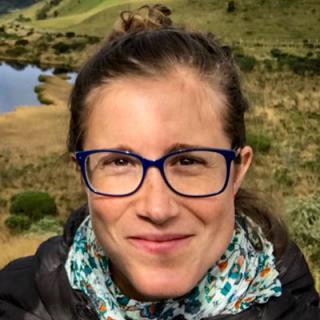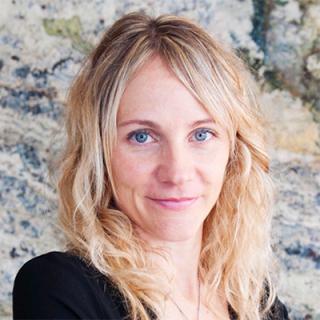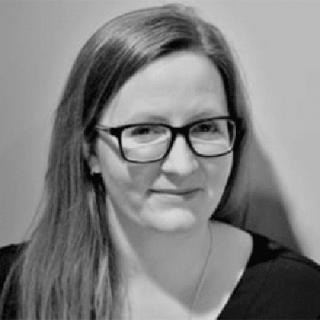Fixing the Leaky Pipeline

Many of today’s biggest global issues involve economic growth, climate change, national security, health and the overall quality of life. In order to find solutions to these issues, there is a growing need for people to embark upon STEM careers in the future. STEM stands for science, technology, engineering and mathematics and has proven throughout history to be a male-dominated field of study. The road for women in pursuit of STEM careers has always been a rocky one. Nevertheless, women throughout history have overcome the challenges to find success despite the discrimination and setbacks that they have faced.
Elizabeth Blackwell was the first woman in the world to receive a medical degree from the Geneva Medical College in New York in 1849. Although she graduated first in her class, she was constantly being separated from her male peers. Professors forced her to sit apart from men during lectures and was often excluded during labs. Blackwell’s initial interest in the medical field was prompted by a dying friend who told her that her suffering would have been lesser if she had a female physician. Once Blackwell persevered, she dedicated her professional life to the advancement of women in the medical field. She promoted women through her many lectures and she even opened her own medical college for women in 1857, called the New York Infirmary for Women and Children.
Following in Blackwell’s footsteps, environmentalist Ellen Swallow Richards worked to save money for tuition at Vassar College, and was the first American woman to earn degree in chemistry from Vassar in 1870. In continuing her education, Richards was admitted to the Massachusetts Institute of Technology (MIT) as a ‘special student.’ The institute banned any other women from attending and claimed that by marking Richards as a ‘special student,’ they were determining women’s aptitude for science. Upon completing all of the requirements for her master’s degree, MIT refused to award it to her. Vassar granted Richards her master’s degree in Chemistry instead. Although Richards was met with defiance from MIT, she later returned to the institution to establish the Women’s Laboratory in 1876. Through the laboratory, Richards taught chemistry, biology and mineralogy, and the Women’s Library allowed Richards to encourage other young women to study science through a female-centric training program.
Grace Hopper is another woman who made her mark and whose contributions in the STEM field made are still being felt today. Hopper joined the WAVES (Women Accepted for Voluntary Emergency Service), a branch of the U.S. Navy, in 1943. Assigned to the Bureau of Ordinates Computation Project at Harvard University, she worked on a team to produce the Mark 1, a very early prototype for the electronic computer. Hopper wrote a manual for the fundamental operating principles of Mark 1, and she continued to invent computer-related technology throughout her career. She invented the first computer compiler and the first computing language called COBOL. Despite her success, Hopper’s peers were quick to judge. Her male peers said that the technology, having been created by females, “could not be expected to survive, let alone flourish.” Hopper’s critics were wrong, and she received many awards for her contributions to computer technology. In 1969, the Data Processing Management Association awarded Hopper as their “Man of the Year.”
Grace Hopper was one of the smartest engineers of the 20th century, yet most of us don’t know about her. In fact, Elizabeth Blackwell and Ellen Swallow Richards are not well-known names in STEM either. When Americans think about famous people involved in STEM throughout history, they think about men like Thomas Edison, Nikola Tesla, Neil Armstrong and many more. Throughout history, men have had the upper hand in STEM. Not only have they had more opportunities to engage in STEM careers, they have received much more recognition for their accomplishments in the field. Women have always had to fight for a spot within STEM fields and have always had to push for fair recognition and representation. Over time, this imbalance has created a masculine-dominant stigma surrounding careers in STEM. Each notable female scientist, engineer, mathematician and technician throughout history has faced great challenges in reaching their accomplishments. Although each of these women were able to break the status quo of their time, they have not broken the pattern that is still at work today. How much has changed since the days of Richards, Hopper and Blackwell?
According to the UNESCO Institute for Statistics, less than 30% of the world’s STEM researchers are women. There is data that proves women in STEM careers are paid less for their research. Therefore, data shows they publish much less research and do not progress as far as men in STEM occupations. Although we have data to prove this, there is little information to explain the extent of these issues.
Dr. Blanca Bernal, Dr. Jessica Kapp and Jeanine Ash are three modern-day women with careers in STEM who have provided a better understanding of the underlying causes and effects of underrepresentation of women in STEM.
All three women spoke about Kathleen E. Grogan’s concept of a ‘leaky pipeline’ in need of immediate fixing. Dr. Blanca Bernal, of Winrock International, described the leaky pipeline metaphor by explaining the basic concept of a pipe and relating that to women in STEM careers.
“We know that increasing the flow of water in a leaking pipe does not guarantee that more water will make it to the other end, but fixing the leak does. Understanding why men and women come out of grad school equally prepared, but it is mostly men who make it to the end of the pipe, entails examining a list of reasons including conscious and unconscious biases, lack of confidence in ourselves as capable and competent women, social barriers impeding our access to and permanence in high level positions, and gender equality programs generally focused on mentoring women rather than promoting them to high level positions.”
A more in-depth study of this ‘leaky pipeline’ conducted by Nilanjana Dasgupta and Jane G. Stout explains how cracks in the pipeline are formed throughout the stages of a person’s educational development. The study points out that gender gaps in science and math performance are improving, but the gaps in STEM self-concept and aspirations remain large. During childhood, boys and girls are exposed to stereotypes about gender roles. Young children are highly affected by outside influences such as peers, parents and even the internet. As people emerge as adults, they are affected by a sense of belonging, or not belonging, when it comes to careers in STEM. This is easily notable with the lack of female role models and mentors in STEM. Women are simply outnumbered. As adulthood progresses and people reach higher levels in their career, the number of females in STEM continues to dwindle. This stage of development is plagued with gender bias in hiring, work evaluation, promotion and the overall climate of a STEM workplace.
When Dr. Jessica Kapp of The University of Arizona related her experience with STEM in her early life, she helped to connect the dots. Kapp explains that although she was good at math and loved being in nature, a career in science was never even a question. From a young age, Kapp wanted to be a mother and a dancer, staying safely within the barriers of stereotypical gender roles. Years later, when Kapp was in the midst of earning her education in Geology, she decided to dress the part.
“My only examples of what a geologist looked like were older white men in hiking boots and fleece jackets, wielding rock hammers and carrying backpacks. It was not a picture that even came close to who I was at the time, and it made me doubt my decision to be a geologist. I felt I had to alter myself to fit the geologist persona. I gave up wearing “girlie” clothes, stopped wearing make-up, and invested in a sizeable collection of wool socks, hiking boots, field pants, and fleece. I didn’t think I would be taken seriously if I didn’t look like what I saw all around me.”
Because of this experience in her early career in science, Kapp feels passionate that if we are going encourage young girls to try STEM, then STEM should reflect their female-ness. If more women are to take up STEM careers, then the image of a scientist must transcend stereotypes.
Dr. Jeanine Ash from Rice University also experienced a late interest in STEM. When asked why she chose a career in science, Ash described herself as a skeptical and unwilling science student. Although Ash’s love of science bloomed later in life, she too experienced barriers in her career. Ash mentions the “millions of tiny paper cuts” that she experiences on a daily basis, saying that,
“I feel the institutional barriers that tamp down women’s careers get a little more pronounced at each career stage. I am at the stage of interviewing for jobs as a university faculty member, and because I am married to another scientist, I have been in interview situations where I field just as many questions about what my husband does in the lab as what I do.”
So how do we begin to fix this leaky pipeline? Dr. Bernal emphasizes the importance of creating visibility and support for women who are already in the STEM field. Because, after all, what would scientific progress be like if we had a leveled playing field that resulted in more women in higher levels of STEM careers? Dr. Ash explains that we place too much emphasis on recruiting women for STEM careers but fail to do enough to retain those women. Ash feels strongly that “asking young women to embark on a STEM career path that they will leave due to institutional barriers like inflexible parental leave, harassment they might face, and feeling they don’t belong is not enough.” How, then, do we eliminate those institutional barriers?
Dr. Kapp puts the solution plainly: men. In order to propel women in STEM, we need the other 50% of humanity to advocate for positive changes. It will take a valiant effort from both sides to propel women and give them equal opportunity and recognition in STEM. The cracks in the pipeline are complicated, and thus the solutions will be as well. For now, we have incredible female figures in STEM, from historical figures like Elizabeth Blackwell, Ellen Swallow Richards and Grace Hopper, to meaningful role models of today like Blanca Bernal, Jessica Kapp and Jeanine Ash.
“I think that questions like this are part of the problem – they make women seem “othered,” and like we must be capable of performing unique feats of science in order for room to be made for us in our fields. No one is asking what the importance of white men is to science in the same way no one is asking them what it is like to be a white man in science today or how they balance being a scientist and a father. They simply belong because they have been the norm, and we talk to them about their science, no their gender, or their skin color, or their parenting philosophy.”

Dr. Blanca Bernal is part of the Ecosystem Services Unit at Winrock International, where she applies science-based approaches oriented to creating resilient and sustainable communities, and to mitigating climate change. As a wetland biogeochemist, she also investigates carbon sequestration, nutrient cycling, and ecosystem response to environmental change. Dr. Bernal has been selected for the 4th cohort of the Homeward Bound Program, an international female leadership program that seeks to increase visibility and leadership of women in STEM.

Dr. Jessica Kapp is an associate professor of practice and the director of undergraduate studies in the Department of Geosciences at the University of Arizona. Her specialty is active learning in large lecture classrooms. She is an advocate for more women in STEM fields, and uses writing, podcasting, and public speaking to inspire young women to pursue STEM. She hosts Plucky Ladies Podcast, available on Soundcloud and iTunes, in which she explores female curiosity, perseverance, and feats of excellence via interviews with women across various disciplines. You can find her TEDx talk Say Yes: Taking Risks in Pursuit of Self Discovery, at https://www.youtube.com/watch?v=aTcSJ5PVG0U.

Jeanine Ash is a Center for Dark Energy Biosphere Investigations Postdoctoral Fellow at Rice University in Houston, TX. As an isotope geochemist, she uses tools from oceanography, chemistry, biology and geology to study how microbes make and destroy gases that influence our past and present atmosphere. She thinks that science is for everyone, and hopes we learn not just how to recruit, but how to retain white women and people of color in the geosciences.
Dasgupta, Nilanjana, and Jane G. Stout. "Girls and Women in Science, Technology, Engineering, and Mathematics: STEMing the Tide and Broadening Participation in STEM Careers." Behavioral and Brain Sciences1, no. 1 (2014): 21-29. doi:10.1177/2372732214549471.
Grogan, Kathleen E. "How the Entire Scientific Community Can Confront Gender Bias in the Workplace." Nature Ecology & Evolution, 2018. doi:10.1038/s41559-018-0747-4.
Michals, Debra. "Elizabeth Blackwell." National Women's History Museum. 2015. www.womenshistory.org/education-resources/biographies/elizabeth-blackwell.
Norwood, Arlisha R. "Grace Hopper." National Women's History Museum. 2017. Accessed February 27, 2019. https://www.womenshistory.org/education-resources/biographies/grace-hopper.
Poole, Steven. "Grace Hopper: The Most Important Female Computer Pioneer You’ve Never Heard Of." New York Magazine. November 4, 2016. Accessed February 27, 2019. http://nymag.com/vindicated/2016/11/the-most-important-female-coder-youve-never-heard-of.html.
"Women's History Minute: "Ellen Swallow Richards"." Youtube. June 29, 2015. Accessed February 24, 2019. https://www.youtube.com/watch?v=DPHc49Ry3_k.
"Women in Science." UNESCO. http://uis.unesco.org/en/topic/women-science.
